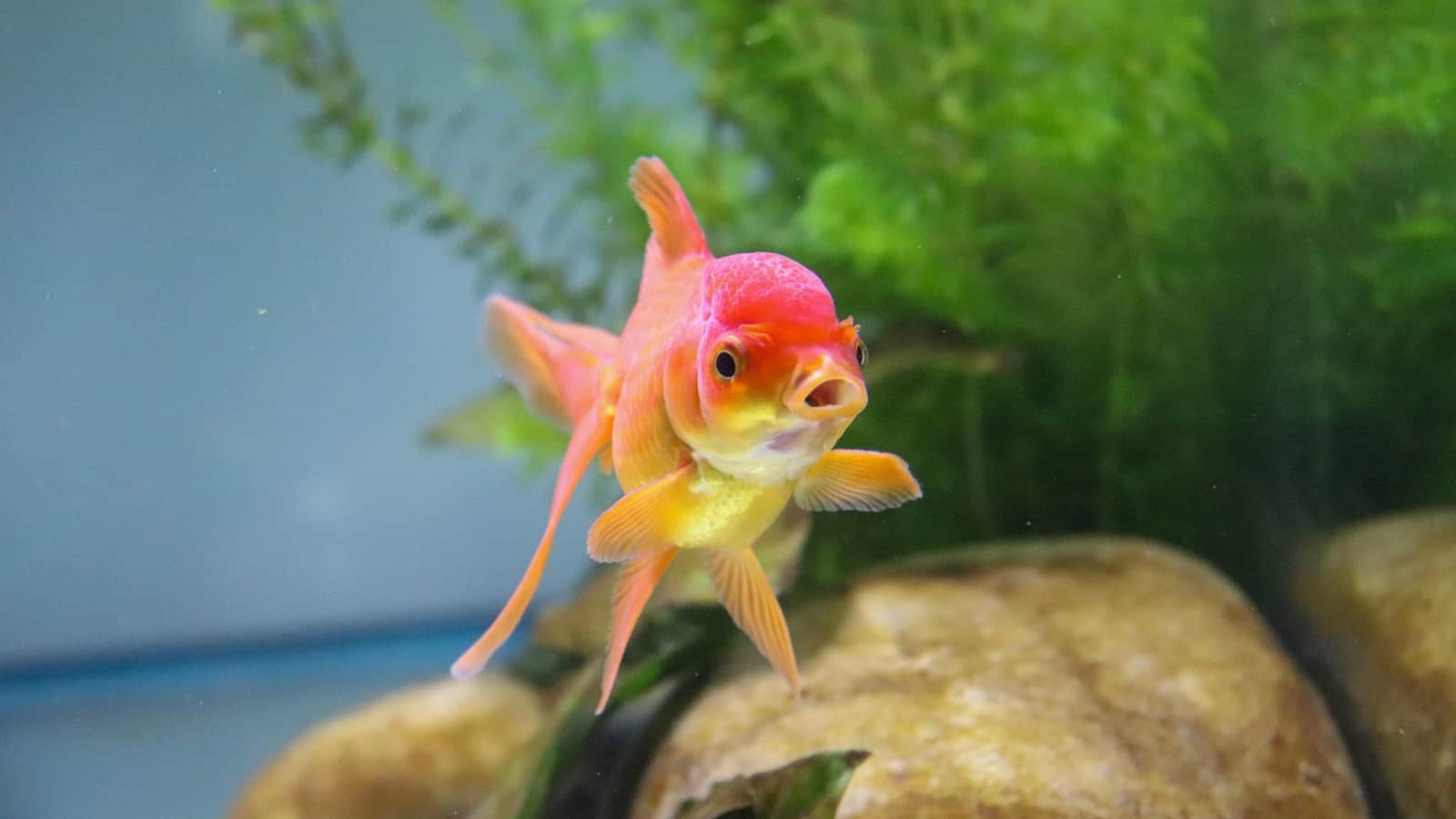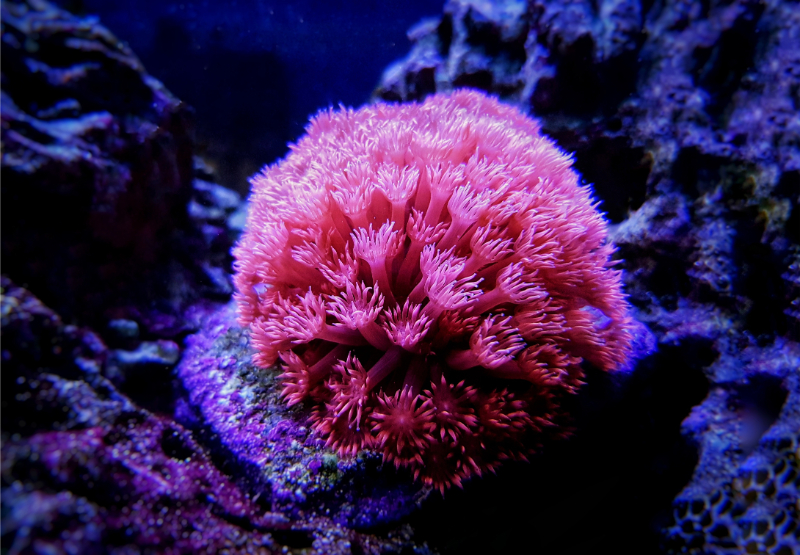If you’ve ever had a good look at a Lionhead, Pearlscale, or Celestial Eye Goldfish and wondered if those extreme mutations might cause the fish to suffer, you’re not alone.
More people than ever are beginning to question the ethics of keeping fancy goldfish, a pet that has been so severely inbred that they often suffer myriad health issues and swimming difficulties throughout their lives.
Because animal welfare is so important to me, I wanted to take a closer look at this question and ask: Is it ethical to keep fancy goldfish? See what you think after exploring this controversial topic with me.
Key Takeaways
- Deformities such as arched backs, compacted bellies, head growths, swollen eyes, and missing fins may cause significant suffering for fancy goldfish during their lives.
- Because fancy goldfish often suffer unnecessary health problems, many people are questioning the ethics of breeding and keeping them.
- In contrast, simple, single-tailed goldfish such as comets often live long and healthy lives. There are also many other coldwater fish alternatives to goldfish.
Firstly, What Are Fancy Goldfish?
Fancy goldfish are goldfish that have been intensively bred to exhibit various deformities that are thought by some to make them more attractive than regular goldfish. The defining feature that unifies all fancy goldfish is a double tail, contrasting with the single tail of their ancestors.
While a double tail alone doesn’t create any great health problems for the fish, the various other mutations that most fancy goldfish exhibit do. We’ll find out more about those in a moment.
What Are the Breeds of Fancy Goldfish?
There are more than one hundred breeds of fancy goldfish, so listing them all isn’t an option here! Instead, here are some of the most frequently seen varieties:
Fantail Goldfish
A basic form of fancy goldfish with an egg-shaped body, high dorsal fin, and double caudal and anal fins. The ‘Ryukin’ is very similar except it has a shoulder hump and often an even more round shape. The ‘Veiltail’ is a variant with longer fins.
Pearlscale Goldfish
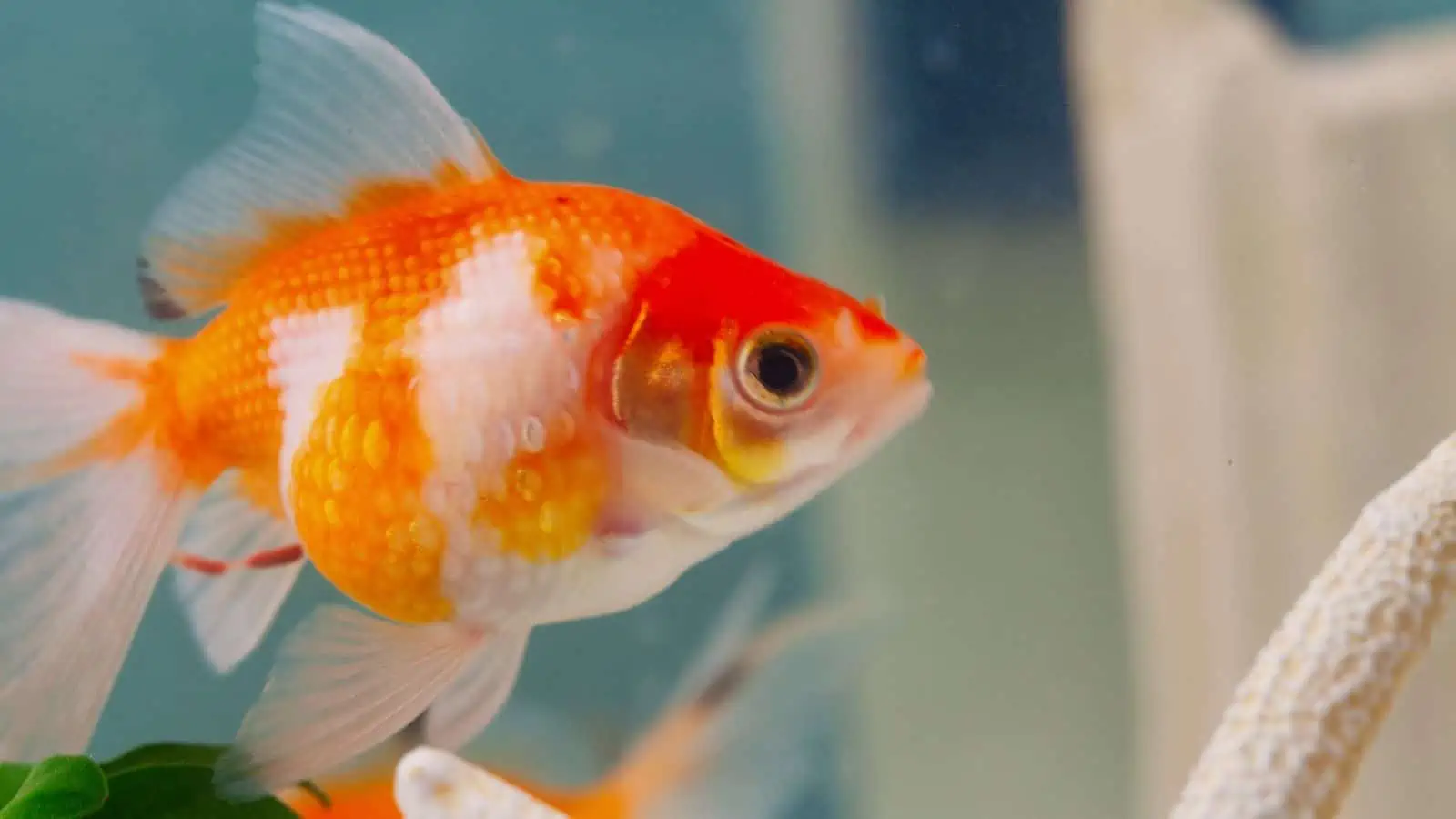
One of the roundest goldfish that can almost appear spherical is the Pearlscale. Its raised scales give it a ‘pearly’ appearance, but they are also fragile and prone to breaking off. Some individuals may also feature head growths.
Telescope Eye Goldfish

A breed characterized by protruding eyes which limits its vision. Black varieties are known as ‘Black Moors’, but several others such as ‘White telescope’ and ‘Panda telescope’ are also marketed. ‘Demekin goldfish’ are very similar except with a shorter, more rounded shape.
Celestial Eye and Bubble Eye Goldfish

Two of the most bizarre and perhaps cruelest breeds of goldfish are the celestial eye and bubble-eye varieties.
Celestial Eye Goldfish have severely swollen eyes that permanently face upwards so the fish can’t see anything below. Bubble Eyes have two, large, fluid-filled sacs under their eyes which can be easily ruptured and infected. Tricolor Bubble Eyes are a mutation of the Ryukin goldfish.
Both breeds usually lack a dorsal fin which makes their swimming cumbersome.
Goldfish With Head Growths

The Oranda Goldfish is characterized by fragile, raspberry-like head growths. Lionhead and Ranchu Goldfish are similar, except they also lack a dorsal fin.
All of these goldfish need to be kept away from rough objects which could severely damage their delicate heads.
What Health Problems Do Fancy Goldfish Face?
Swimming Difficulties
Because of their physical mutations, fancy goldfish are less strong swimmers than their single-tailed relatives. To start with, fancy goldfish have two tails rather than one which makes swimming more cumbersome.
Their bent spine and swollen body parts can add to this difficulty, and several varieties even completely lack a dorsal fin – one of the most important swimming apparatus for maintaining an upright position in the water.
Spinal Issues
The unnaturally round shape of fancy goldfish is achieved by breeding them with a spine that’s permanently bent.
We could compare it to a human who’s born with a severely deformed spine – it might even cause chronic pain. It affects many other aspects of the fish’s health, including its internal organs.
Compacted Organs
The round shape of fancy goldfish often leads to compacted internal organs, an issue that leads to all kinds of health problems.
Swim bladder disease is one of the most common health issues in goldfish and a compressed swimbladder only adds to this problem.
Limited Vision
The telescopic eyes that some goldfish are bred to exhibit severely compromise their eyesight. Celestial eye goldfish suffer this problem even more since their eyes are permanently locked upwards towards the glare of the aquarium light overhead. Not a very pleasant predicament!
Difficulty Breathing
According to The Royal New Zealand Society for the Prevention of Cruelty to Animals, the facial growths that some breeds like Lionshead and Ranchu goldfish inherit can become so enlarged that the fish have trouble opening and closing their gills properly for breathing.
Problems Surfacing
Another problem of the celestial eye goldfish is that their eyes are so enlarged that they protrude above the water when the fish tries to surface, thereby preventing them from feeding normally.
Infections
Many of the manmade mutations that affect fancy goldfish leave their bodies more fragile and more vulnerable to damage and infection.
Varieties such as pearlscale goldfish that have protruding scales can easily be damaged when they scrape against rough objects in the aquarium. Likewise, the swollen head growths of Lionhead and Ranchu Goldfish can easily be damaged.
Perhaps the most vulnerable of all is the Bubble Eye, whose fluid-filled sacs can easily rupture and become infected if they scrape against any rough or sharp objects.
Long Fin Infections
As with other fish bred for long fins, fancy goldfish can suffer from fin infections.
When long fins rub against sharp objects or even rough gravel, their fins can get frayed and a disease known as ‘fin rot’ can ensue. Long fins are also vulnerable to being nipped by other fish, especially barbs and certain types of tetras, again often leading to infection.
Less Hardy
Although it won’t usually be an issue in an aquarium, fancy goldfish are less suitable for garden ponds because they’re less cold-hardy.
While common goldfish can live below the ice of frozen ponds, it’s usually advised to keep fancy goldfish at temperatures above 60°F to nurture their fragile immune systems.
Slow Feeding
It may not sound like a serious issue, but the slower swimming speed, lack of vision, and problems surfacing that many fancy goldfish suffer with can be a significant handicap when competing with other fish for food.
If they’re sharing a tank with more agile tank mates, fancy goldfish may not receive enough food to sustain good health. In extreme instances, they may even starve.
Kinder Alternatives To Fancy Goldfish
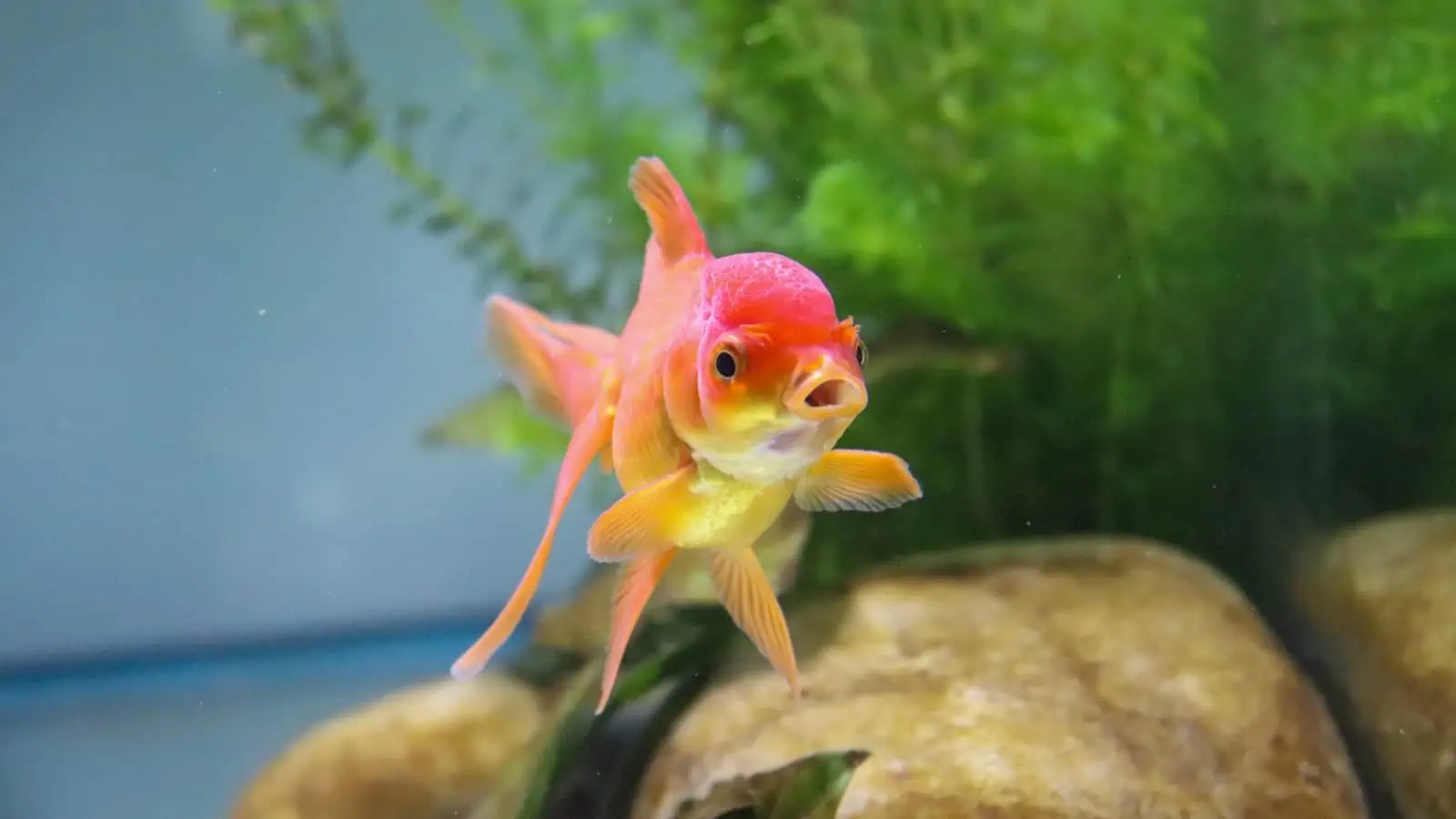
If you would still love to keep a goldfish, but not one that’s destined to suffer from a host of health problems, then don’t fret! You can choose a single-tailed variety that’s not handicapped by any severe mutations and should live a long and happy life.
Fancy Goldfish vs Single-tail Goldfish
In comparison with fancy goldfish, single-tail goldfish are usually genetically closer to their wild ancestors and therefore healthier, with a more robust physique.
Let’s take a look at the most common types of single-tail goldfish.
Common Goldfish

Otherwise known as ‘Wild Goldfish’, the Common Goldfish is the type that’s closest to the species’ wild ancestors.
These tough, strong-swimming fish are better suited to garden ponds than fish tanks as they can get very big indeed! Growing up to 16 inches long and 5 lb in weight, you’d need a very large aquarium to accommodate one.
Comet Goldfish
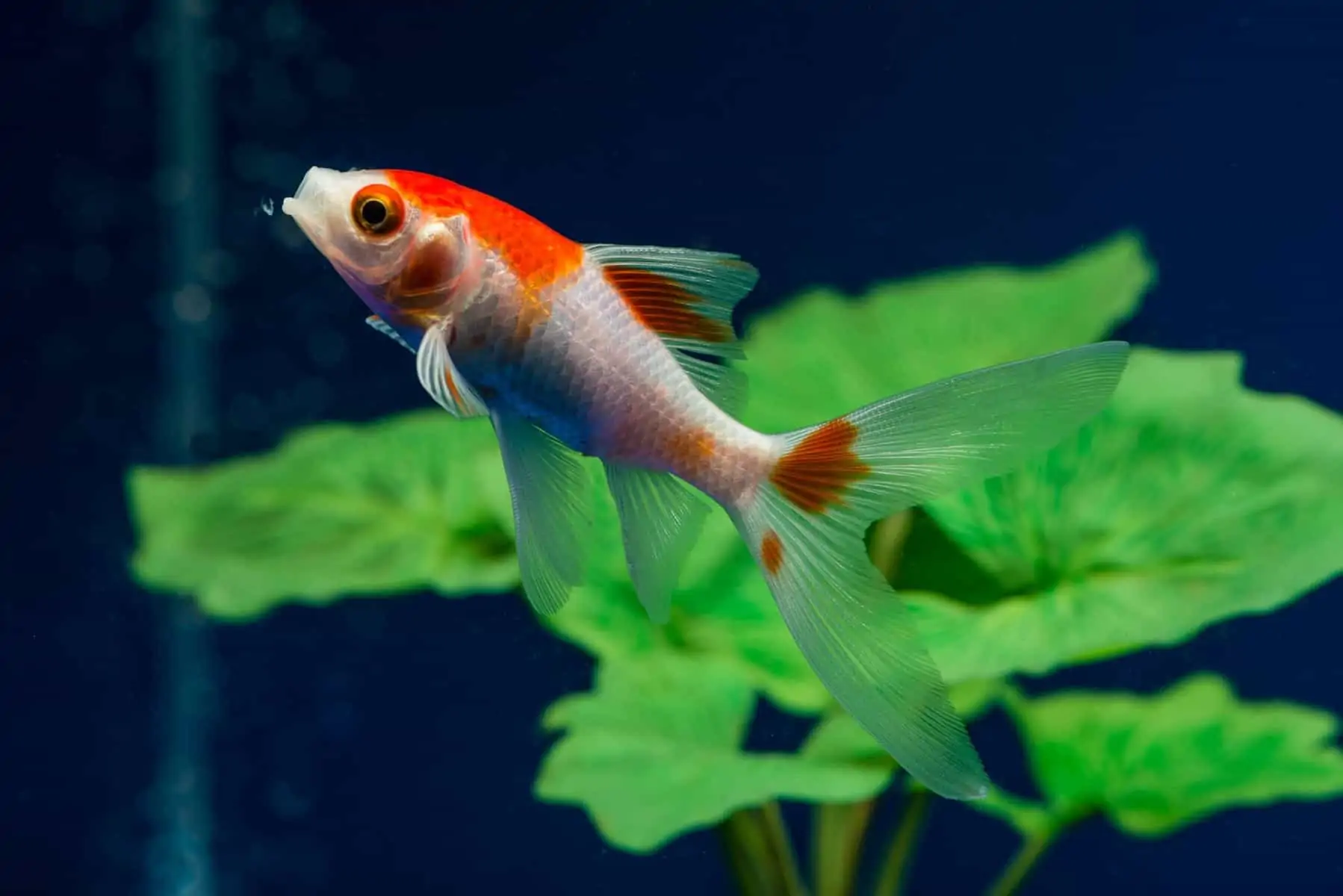
Comets are closely related to common goldfish but grow to a slightly smaller size. Their main distinguishing feature is their longer fins, but Comets are still agile, strong-swimming fish with a single tail!
Comets average 10-12 inches in length when fully grown so need at least a 55-gallon tank for a single fish. Healthy individuals sometimes exceed 20 years of age!
Shubunkins
Shubunkins are single-tailed goldfish similar to comets but have mixed, marbled colors of red, white, gray, and black. Some highly prized specimens even display some blue colors.
Certain forms of Shubunkins have a more round, compressed body shape, so be sure to choose one that’s more streamlined if you’re looking for a healthy individual with good longevity!
Other Cold Water Fish
If you’re looking for goldfish because you want to keep a fish tank without a heater, don’t forget you have many other options!
Rosy barbs, gold barbs, paradise fish, bloodfin tetra, Buenos Aires tetra, pearl danios, zebra danios, white cloud mountain minnows, cherry shrimp, and most livebearers can live in a coldwater aquarium providing it’s sited in a warm room where the temperature doesn’t drop below 65°F.
While many of these species can live together, few of them would be as happy sharing a tank with goldfish. Because goldfish have a high bioload, messy habits, and the tendency to destroy live plants, they’re certainly not the model community fish!
FAQs
Is It Cruel To Keep Goldfish in a Bowl?
Thankfully, this question is being asked less and less because the majority of the public is now aware that it’s extremely cruel to keep goldfish in fish bowls.
Fish bowls usually don’t have a filter or lid, leaving the fish in danger of ammonia poisoning, hypoxia, predation, or even jumping out of the bowl. Additionally, bowls are far too small, and distort the fish’s vision, causing constant stress.
Several countries such as Italy and Finland have banned goldfish bowls, and they may well become a thing of the past in years to come. We dedicated an in-depth exploration of this issue in this article.
Can I Keep Fancy Goldfish in a Garden Pond?
Although I’d advise that common goldfish are far better off in an outdoor pond than in an aquarium, the same can’t be said for fancy goldfish.
Because fancy goldfish have a much weaker immune system and poorer swimming ability, they’re much more likely to succumb to cold temperatures and predation from animals like birds, reptiles, and mammals than their single-finned relatives.
What Do You Think? – Is It Ethical To Keep Fancy Goldfish?
After exploring the vast array of health and well-being problems that fancy goldfish can face, what do you think? Is it ethical to keep them when we know the suffering they might face?
Since there are several healthier types of goldfish, as well as many other types of coldwater fish to choose from, one might ask why goldfish with such severe mutations are still being bred, sold, and considered ‘prized fish’.
Some would still argue that the fancy goldfish have such a strong following that the health issues are justified. What do you think? Let us know in the comments, or post this topic on social media to generate more discussion. Thank you!
